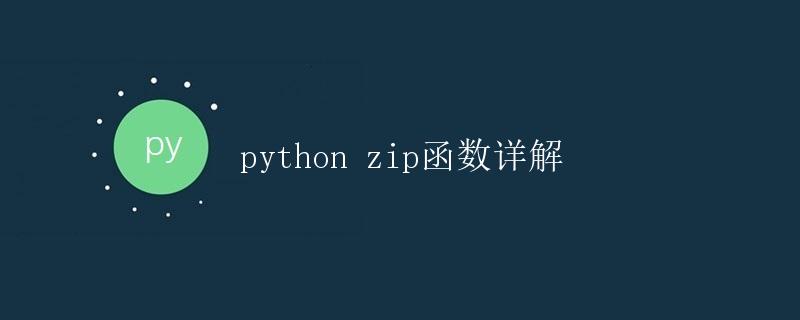Python zip函数详解

在Python编程中,zip函数是一个非常有用的内置函数,它可以将多个可迭代对象(如列表、元组、集合等)合并为一个元组的列表。本文将详细介绍zip函数的语法、用法和一些示例演示。
zip函数的语法
zip函数的语法如下:
zip(iterable1, iterable2, ...)
其中,iterable1, iterable2, ...是要合并的可迭代对象,可以有多个。zip函数将返回一个迭代器,每次迭代会返回一个元组,元组中包含了输入可迭代对象的相应位置的元素。
zip函数的用法
下面是一个简单的示例,展示了如何使用zip函数合并两个列表:
# 定义两个列表
list1 = ['a', 'b', 'c']
list2 = [1, 2, 3]
# 使用zip函数合并两个列表
result = zip(list1, list2)
# 打印合并后的结果
print(list(result))
运行结果:
[('a', 1), ('b', 2), ('c', 3)]
可以看到,zip函数将两个列表按位置合并为一个元组的列表。
zip函数的应用
合并多个列表
zip函数不仅可以用来合并两个列表,还可以合并多个列表。例如:
list1 = [1, 2, 3]
list2 = ['a', 'b', 'c']
list3 = [True, False, True]
result = zip(list1, list2, list3)
print(list(result))
运行结果:
[(1, 'a', True), (2, 'b', False), (3, 'c', True)]
遍历多个列表
zip函数也可以用于同时遍历多个列表。例如:
list1 = ['apple', 'banana', 'cherry']
list2 = [1, 2, 3]
for fruit, number in zip(list1, list2):
print(f"There are {number} {fruit}s")
运行结果:
There are 1 apples
There are 2 bananas
There are 3 cherrys
转置矩阵
zip函数还可以用来实现矩阵的转置操作。例如,将一个二维矩阵进行转置:
matrix = [[1, 2, 3], [4, 5, 6], [7, 8, 9]]
transposed = list(zip(*matrix))
for row in transposed:
print(row)
运行结果:
(1, 4, 7)
(2, 5, 8)
(3, 6, 9)
总结
zip函数是Python中非常实用的内置函数,可以用于合并多个可迭代对象,遍历多个列表和实现矩阵的转置等操作。
 极客教程
极客教程